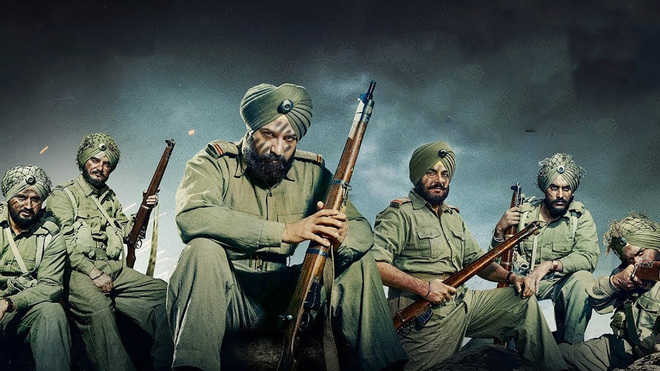When the will became a weapon
Maj-Gen Raj Mehta (retd)
Subedar Joginder Singh is a just-released Simarjit Singh-directed 1962 India-China War biopic. It has actor-singer Gippy Grewal in the lead with Aditi Grewal as his charming consort. Running to packed houses, it is based on the peerless saga of a 1962 War brave heart of 1 Sikh (now 4 Mech). He was posthumously awarded the nation’s highest gallantry award, the PVC, for his desperate last stand on the right shoulder of the 16,500 feet high Bum La against the People’s Liberation Army that attacked his IB Ridge defended locality on that chill, forlorn morning of October 23, 1962.
Wearing summer fatigues and rubber jungle boots in bone-chilling sub-zero climate, his 29 strong 11 Platoon/Delta Company 1 Sikh armed with antiquated World War I vintage bolt-action single-round-manual-fed Lee Enfield rifles of .303 caliber and just basic scales of ammunition (100 rounds per soldier). All they had in plenty were raw guts and grit. When the battle ended after the third successive Chinese attack, among the many Chinese who lay dead were 26 of his men. He sent three soldiers to ferry ammunition from the nearby company HQ that was at Tongpeng La, which was under continuous attack too. Grievously shot in the thigh, Joginder was taken prisoner, but not before he had led his last few men to charge the well-clad, winter-protected automatic Kalashnikov rifle-armed Chinese hordes with their last weapon, naked bayonets.
The rather unusual, skillfully presented biopic breaks fresh ground in making its key military and civilian characters three dimensional and credible in a manner that will hopefully set standards for a new genre of war films. Hopefully, these would spell out war and its social fallouts without maudlin pity or absurd Tiger Zinda Hai hype. Another example of aesthetically made and directed war film would be thought-provoking Diljit Dosanjh starrer Sajjan Singh Rangroot. The film is drawing crowds as well.
Joginder Singh Sahnan was born on September 26, 1921 at Mahla Kalan, near Moga, Punjab. He became the second Saini Sikh to get the PVC after Capt Gurbachan Singh Salaria, who earned the award posthumously leading a Khukri charge in December 1961 at Katanga, Congo, while on a UN Mission.
Joginder served with distinction on the Burma front during World War II, the Allied 14th Army against the Japanese headed by Gen ‘Bill’ Slim. He went on record stating: “You are never disappointed when you are with the Sikhs….Their bravery should be within all of us”. Joginder was also a part of 1 Sikh when it was pressed into service on special nomination by Gen Sir Dudley Russell, the Delhi and East Punjab GOC (later Western Command). The unit flew to Srinagar on Oct 27, 1947, just in time to save Kashmir for India; its gallant CO, Lt Col DR Rai, earning India’s second MVC posthumously.
October 1962 signaled the start of a winter of despair for 1 Sikh on the freezing Himalayan wastes of Tongpeng La. The Sikh Lions, despite being nipped by frost were holding fast in their defences, but there were serious apex-level voids in diplomacy, war-fighting strategy and operational logistics. Thus, when the PLA attacks commenced, supported by murderous mortar and artillery shelling, the only substantial weapon the Sikhs under Joginder and his company commander, Lt (later Col) Haripal Kaushik, VrC, (a Hockey Olympian) had on display against the assaulting Chinese was sheer guts and a never-give-up attitude.
The film has a few areas of gauche military interpretation which jar military propriety and work ethic. The enemy is depicted in a surreal, caricatured manner, divorced from reality. Some liberties have been taken with the factual narration too. Yet, the film makes a powerful statement for ace soldiering and strong familial bonds that rivet the audience. Not the least, a message that resounds is that for sustaining the idea of India, soldiers and soldiering is a non-negotiable obligation.









